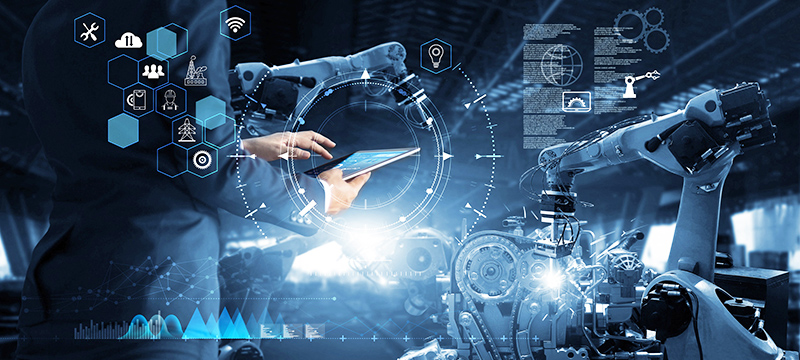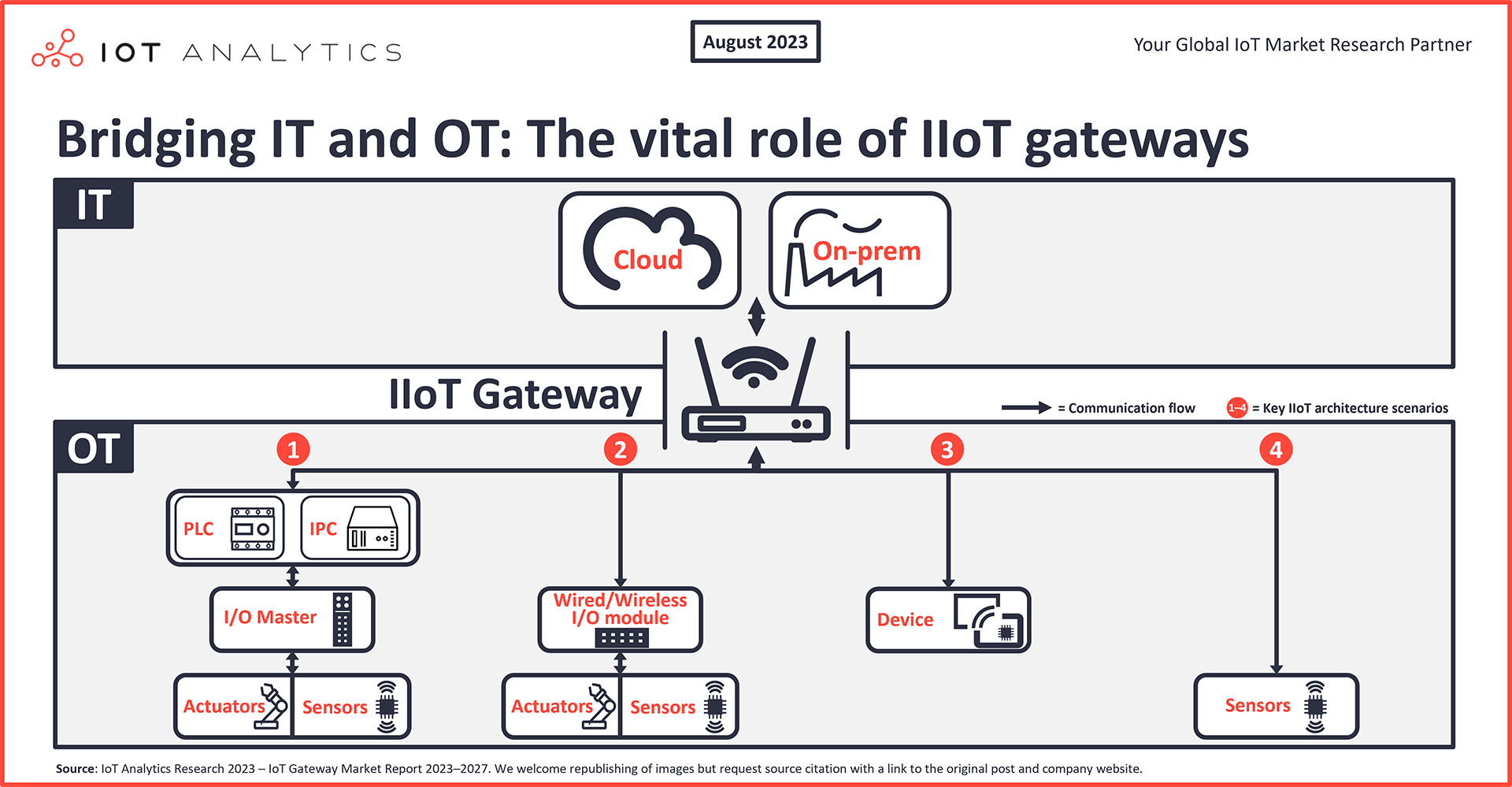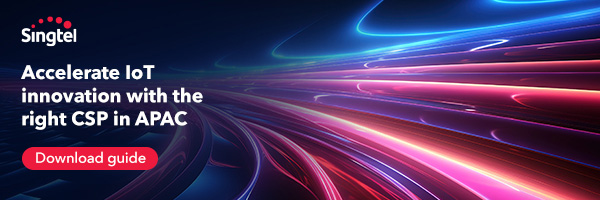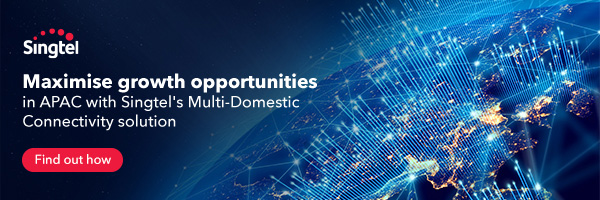According to IoT Analytics, a leading global provider of market insights and strategic business intelligence for the Internet of Things (IoT), the industrial IoT gateways market accelerated significantly from 2021 to 2022, growing ~14.7% to reach $860 million (38% of the overall IoT gateways market).
KEY QUOTES:
Knud Lasse Lueth, CEO at IoT Analytics, comments that:
“Industrial IoT gateways are critical for connecting legacy systems with modern technology. They also play an important role to support the migration of manufacturing applications to the cloud. In the future I also expect a number of smaller applications to sit directly on IIoT gateways, leveraging containerization technology, more powerful storage and computation and in some cases even AI chips for ML inference.”
Kalpesh Baviskar, Analyst at IoT Analytics, added that:
“IoT gateways have emerged as a highly cost-effective solution for deploying IoT systems with multiple sensors. They play a crucial role in connecting legacy equipment and devices that were previously unconnected.”
“In recent years, we have seen the integration of high-performance processors and AI chipsets into IoT gateways, transforming them into edge IoT gateways. These edge gateways can perform local data processing and analytics, significantly reducing the amount of data that needs to be sent to the cloud. This can lead to significant cost savings and performance improvements for IoT applications.”
KEY INSIGHTS:
- According to the IoT Gateway Market Report 2023–2027, the $0.9B industrial IoT (IIoT) gateway market experienced accelerated growth between 2021 and 2022, which is set to continue on the back of several favorable tailwinds.
- IIoT gateways are enabling IT and OT convergence by securely and efficiently sharing data between floor-level OT equipment and IT equipment or the cloud—with implementation typically as part of one of four broader IoT architectures.
- There are several IIoT gateway advancements e.g., in security, edge computing, and storage.
The vital role of industrial IoT gateways in bridging IT and OT
IIoT gateways: Market and role
The industrial IoT gateways market accelerated significantly from 2021 to 2022, growing ~14.7% to reach $860 million (38% of the overall IoT gateways market), and we forecast continued growth at least through 2027. The factors driving this growth include the following:
- Connecting the unconnected. Many companies are retrofitting their legacy equipment with sensors and controllers, using IIoT gateways to perform necessary protocol and data transformation and transfer the data to an IT endpoint.
- Software applications are migrating. Companies with connected equipment are moving some key applications to the cloud, with IIoT gateways emerging as the main nexus point for information flow in and out of industrial premises. Some applications are also now run locally on the gateway itself.
- More powerful hardware. New, enhanced gateways with embedded multi-core processors, AI chipsets, and secure elements are enabling faster and more secure data processing and transmission (to an IT endpoint or cloud).
These factors reflect our assessment that IIoT gateways are becoming the juncture for IT and OT convergence.
Note: When we refer to IIoT gateways, we refer to (ruggedized) hardware that connects sensors, IIoT devices, and industrial equipment to cloud or on-premises servers or PLCs/IPCs operating on distinct industrial networks. For an exact definition, refer to our report.
How IIoT gateways connect the IT and OT worlds
Many companies maintain legacy equipment that does not have sensors or control devices. Even if the legacy equipment has sensors or controllers that connect locally, such as to a human-machine interface or panel PC on the factory floor, it may not offer connectivity options or use messaging protocols that end equipment (like an IT server or cloud) uses. Meanwhile, companies that possess IoT-enabled equipment may desire to move data off-premises (e.g., to remote IT equipment or the cloud) or enhance local data computation for automated responses before transmitting the data.
In cases like these, IIoT gateways can connect with standalone or integrated sensors—either wirelessly or wired through I/O module masters—to transmit data to IT or cloud servers. As described below, they fit within many architectures found in industrial IoT solutions.
IIoT gateways within IoT architectures
Whether a company builds or buys an IoT solution, the solution will align with an IoT architecture to collect and transmit data to the endpoint. While a direct sensor-to-cloud architecture does not require the use of an IIoT gateway, IIoT gateways are commonly found in 4 general types of IoT architectures.
1. Sensors/devices to PLC/IPC to IIoT gateway to cloud
In industrial environments with existing automation hardware, the sensors/devices to PLC/IPC to IIoT gateway to cloud architecture is very common. Field sensors or actuators are connected to I/O module masters. These I/O module masters transmit data to the on-premises PLC or IPC. The PLC/IPC is then connected to the IIoT gateway, which serves as a bridge between the PLC/IPC and the cloud.
This architecture can be very powerful but also potentially dangerous. The IIoT gateway can technically be configured to remotely access the entire architecture that sits below the PLC/IPC. While this setup enables any data to flow between IT and OT and thus any imaginable use case, it also has the biggest potential attack surface (potentially the entire facility), e.g., in case of a misconfigured security architecture.
2. Sensor to I/O modules to IoT gateways to cloud
In the sensor to I/O module master to IoT gateways to cloud architecture, simple sensors connect to I/O module masters. The I/O module master then uses wired or wireless connectivity standards to transfer data to IIoT gateways, bypassing any PLC or IPC. This architecture proves to be highly effective in scenarios where multiple sensors are arranged into clusters—the I/O module master acts as the central node for each cluster of sensors, efficiently gathering and transmitting data to the cloud via an IIoT gateway.
3. Sensors in devices to IoT gateway to cloud
In the sensors in devices to IoT gateway to cloud architecture, devices equipped with single or multiple onboard sensors are connected directly to the IIoT gateway. This architecture is often deployed where non-standalone IoT devices are used (i.e. devices that cannot connect to the internet by themselves).
4. Sensors to IoT gateway to cloud
In the sensors to IoT gateway to cloud architecture, IIoT gateways enable connections between sensors and cloud servers directly. This architecture can for example be found when retrofitting specific sensors on an asset (e.g., for condition monitoring) with the desire to bypass all other existing networks (to not interfere with them and create a new security risk).
Advancements in the capabilities of IIoT gateways
As IIoT gateways have become more common in IIoT solutions, they have become capable of offering more for their users. In general, IIoT gateways typically offer 8 key functions:
- Protocol translation
- Data management
- Device management
- Computation
- Communication
- Resource management
- Security management
- Managing quality of service
As the IIoT gateway market has grown, these functions have advanced. The following are just some examples of advancements.
“A growing number of customers [are] requiring proof of security level from manufacturers for their industrial IoT equipment.”
Security management
As the number of connected devices continues to increase, the risk of cyberattacks and unauthorized access becomes more significant. This is especially true for companies looking to connect factory equipment to external IT or cloud servers. Fortunately, to address these risks, IIoT gateway vendors are proactively incorporating security features into their products and adhering to industry-specific regulations and standards, allowing OT monitoring and control to reside securely behind layers of policies and access controls.
A notable series of standards is IEC 62443, approved in 2021, which directs all IEC 62443-certified products to adhere to specific product development requirements from the early stages of design. This set of standards has become mandatory technical requirements in many countries, and according to Pascal LeRay, Head of Cyber Security at Bureau Veritas, “a growing number of customers [are] requiring proof of security level from manufacturers for their industrial IoT equipment.”
In our research, IIoT gateway companies noted the importance of incorporating security standards in their products. Teltronic’s CEO, Juan Ferro, stated that “the sudden irruption of cybersecurity in the industry has been interpreted by Teltronic as an opportunity to improve both [our] products and associated processes,” adding that the pre-emptive adoption of security standards placed them ahead of other companies in their sector.
Along with standards, IIoT gateways are increasingly incorporating hardware security, using embedded secure elements either within processors or on the PCB/modules as trusted platform modules (e.g., TPM 2.0). Ultratronik’s A1 IoT gateway integrates NXP’s EdgeLock SE051 secure element, and Eurotech’s RELIAGATE 10-14 series maintain IEC 62443-4-1, -4-2, and PSA Level 1 certifications and have a TPM 2.0 security chipset—OPTIGA TPM SLM 9670 from Infineon Technologies.
“The milliseconds of latency [between] an industrial robot and many real-time systems can be the difference between a safety hazard and a productive assembly line.”
Computation
IoT gateways in general have trended toward more processing power. In industrial solutions, this has helped companies move data processing and computation toward the solution’s edge—nearer to the data collection point—saving them bandwidth and communications power and freeing their IT and cloud servers to manage other tasks. Additionally, there has been a trend of integrating AI chipsets into some IoT gateways to facilitate edge computing. A noteworthy example is AAEON’s AIOT-AVID IoT Video Analysis Gateway, which incorporates Intel’s Myriad X vision processing unit (VPU).
The ability to process and automate data in real time can mean much for a company’s bottom line, as one senior VP stated, “The milliseconds of latency [between] an industrial robot and many real-time systems can be the difference between a safety hazard and a productive assembly line.”
Data and resource management
Local data storage helps enable data processing at the edge. Further, some industrial use cases may call for data sorting and analysis before being transmitted to an IT or cloud server, either due to limited network connectivity or the desire for more efficient use of IT equipment.
The need for local data storage has led to eMMC flash memory and SSD solutions on IoT gateways in general. In mid-2022, Robustel launched three ARM-based IIoT gateways with varying DDR and eMMC sizes to meet application needs. A few months later, Compulab announced its IOT-GATE-RPI4, a Raspberry Pi-based IIoT gateway that offers up to 128 GB of eMMC memory and mPCIe slots for SSD storage expansion up to 256 GB. Other examples include MOXA’s AIG-301 series IIoT gateway with 16 GB of eMMC and Belden’s Hirschmann OpEdge-8D with 64 GB of SSD flash memory.
Device management
With integrated storage comes the ability to containerize applications for deployment on IoT gateways, including device management software. Traditionally, deploying applications on IoT gateways involved installing them directly on the equipment’s operating system, which had limitations in terms of scalability, flexibility, and ease of management. However, companies are increasingly using containerization as a deployment strategy for applications on IIoT gateways, offering platforms like Kubernetes and runtimes like Docker. These technologies provide a way to create lightweight and isolated runtime environments, known as containers, where applications can run consistently across various platforms and environments.
Many gateway OEMs are also building app stores with hundreds of ready-made applications that end users can deploy to their gateways (and in the cloud), such Bosch Rexroth’s ctrlX store, Siemens’s Industrial Edge Marketplace, and Advantech’s WISE-Marketplace.
Key Benefits of IIoT Gateways
In our analysis of 65 case studies, we identified numerous benefits of IIoT gateway implementations based on various use cases. The following are 3 of the main benefits companies cited.
1. Better IT/OT integration
Indeed, this is a key goal of implementing IIoT gateways, and our analysis shows that many companies have achieved this goal. A common goal of IT/OT integration is remote monitoring and response. As an example, Vitesco Technologies Italy used Zerynth’s 4ZeroBox, an on-premises IIoT system for real-time monitoring and predictive maintenance. This solution enabled Vitesco to predict pneumatic valve malfunctions 24 hours in advance, which reduced assembly downtime and increased productivity.
2. Reduced labor costs
IIoT gateways are often deployed for automation purposes and as such can reduce labor costs, human effort, and human errors. While Vitesco saw a 50% reduction in its manual labor requirement with its 4ZeroBox application, Colombian steel manufacturer Corpacero cut costs associated with repair labor after partnering with Senzary to deploy RotaryIQ and InsightsIQ solutions for predictive maintenance and remote machine management.
3. Energy savings
Enterprise energy management analytics software provider Wattics partnered with Kontron to use Kontron’s KBox A-101 as a central ‘edge node’ for Wattics Sentinel software at the customer’s site. It connects to the local energy grid and the Sentinel grid, facilitating meter configuration, reliable data collection, pre-processing, compression, and secure communication.
IoT gateway market outlook
With many companies seeking to either retrofit their equipment or enhance their IoT solutions, we have seen solid growth in the IIoT gateway market (8.1% CAGR) between 2018 and 2022, with acceleration specifically from 2021 to 2022. We assess that this trend will continue since use cases in manufacturing and certain applications continue to demand real-time processing, low latency, and secure data handling. Further, the following 5 trends, which are discussed in more depth in the IoT Gateway Market Report 2023–2027, support this assessment:
-
1. IoT gateways are becoming more modular, allowing IIoT gateway vendors to offer a range of options and configurations to meet customer needs and enable easy scalability.
-
2. IoT gateways are supporting more wireless connectivity options, such as secure cellular solutions with eSIM/iSIM technology, enabling IIoT gateways to handle multiple connected devices in an expanded perimeter of operations.
-
3. IIoT gateway vendors are collaborating to combine hardware and software solutions, simplifying deployments and reducing costs.
-
4. OT hardware is starting to consolidate (e.g., I/O module masters shifting to IIoT gateways)
-
5. Virtualization of workloads (e.g., virtual PLCs) allows IPCs and IIoT gateways to perform tasks that were previously tightly coupled to other pieces of hardware.
IIoT gateways play a pivotal role in bridging the gap between legacy machinery and modern systems, facilitating retrofits and brownfield installations. As industries strive for global connectivity and centralized management of OT devices, IIoT gateways will continue to play a major role in integrating operations across various locations.
What it means for IoT gateway vendors
5 key questions IoT gateway vendors should ask themselves based on the findings of the report:
-
1. Do our IIoT gateways remain compliant with updated security standards?
-
2. Do our customers require AI edge capabilities as a general offering?
-
3. Have we explored local data storage options to increase computation while decreasing latency?
-
4. Should we containerize our edge IIoT applications? And if so, how?
-
5. Are our general solutions enabling seamless IT/OT integration for customers? If not, should we focus on tailored solutions for our customers?
What it means for IoT adopters
5 key questions IoT adopters should ask themselves based on the findings of the report:
-
1. Have we assessed the various available IIoT gateways and their potential impact on our overall IoT strategy?
-
2. Which IoT architecture(s) are we using? Can an IIoT gateway offer improvements?
-
3. Do our current IIoT gateways meet current security standards? If not, what updates do we require to meet these standards?
-
4. Have we assessed the possible benefits of edge computing (e.g., automating controls locally based on the data)?
-
5. Should we leverage local data storage and containerized applications for better device management and updates?









